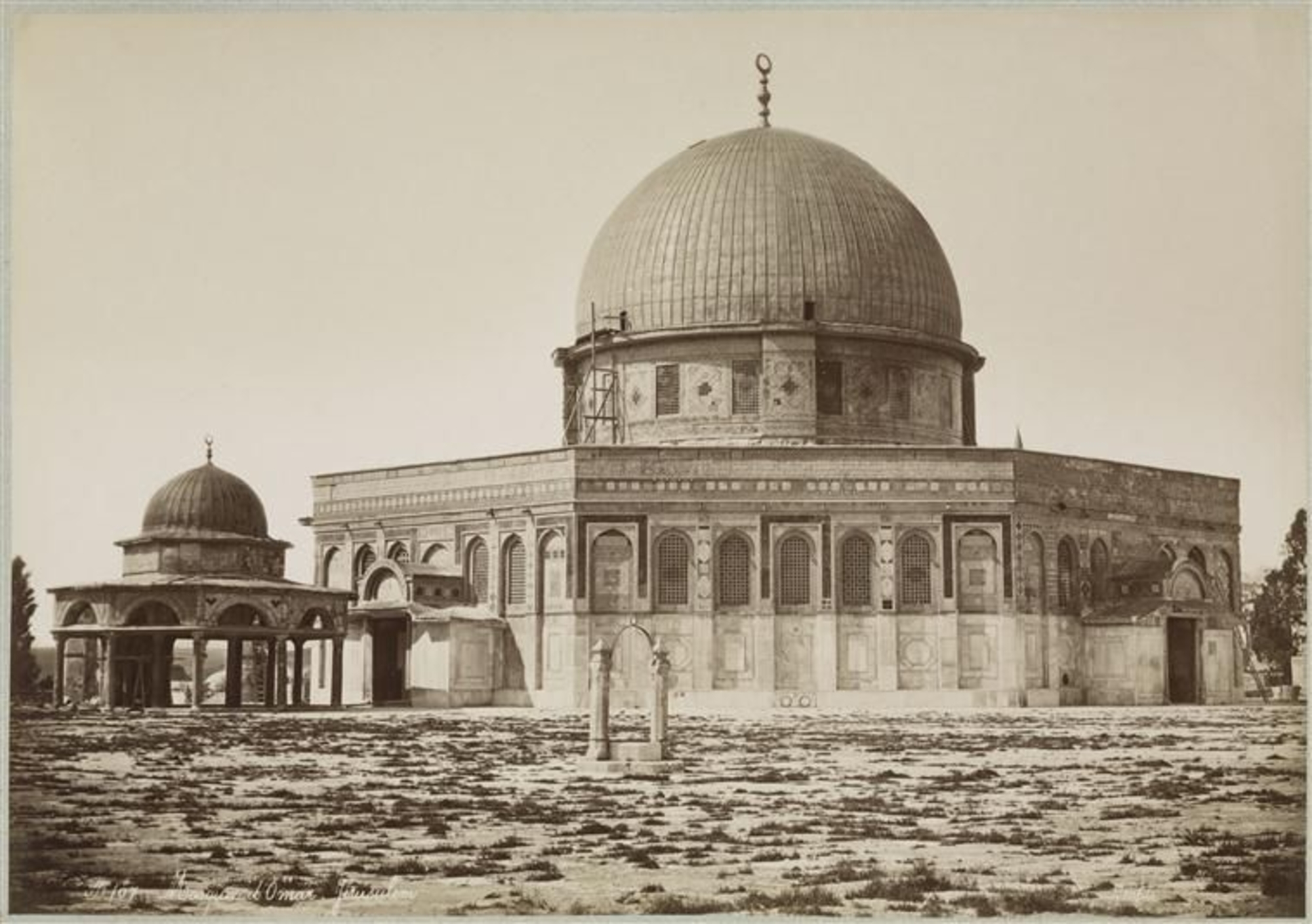
- Home
- Architecture of the Umayyad Caliphs
- The Dome of the Rock
- Umayyad decorations
Organisation of the interior decoration
The Dome of the Rock is exceptional in many ways. Besides its sacred character, it is also the oldest Islamic monument still in existence, where 7th century Near Eastern decorative traditions and techniques are carefully conserved and still visible inside the building. Only the decoration of the cupola and the exterior facings were completely redesigned during the Ottoman period.
The interior Umayyad decoration is divided into two parts. The lower part of the elevation is faced with veined marble in delicate geometric patterns, while the upper part is covered with mosaics. The architraves that consolidate the elevation of the octagonal ambulatory are faced with repoussé bronze.
Both the decorative techniques and the joint use of marble, mosaics and bronze are borrowed directly from the Byzantines.
At the crossroads of the Byzantine and Sassanian traditions
The mosaic decoration of the ambulatories and drum shows how the Umayyads wanted to position themselves as heirs to the two great Byzantine and Sassanid empires that shared the Near East between them before the rise of Islam.
Dense vegetal scrolls spring from cornucopia and unfurl across a shimmering golden background. Their antique treatment is nuanced by their highly symmetrical and abstract appearance, which attests to a Mesopotamian Sassanid influence also found in the crowns, some winged, that dot the vegetal decoration. Vine branches on the architraves of the ambulatory resemble regional late-antique vine motifs.
At the top of the octagonal ambulatory, on a blue background, a monumental golden inscription in angular script, known as kufic, gives the date of the mosque’s construction, the name of the patron - altered at a later date - and cites several Koranic verses.
Associated media
Open Media Library
